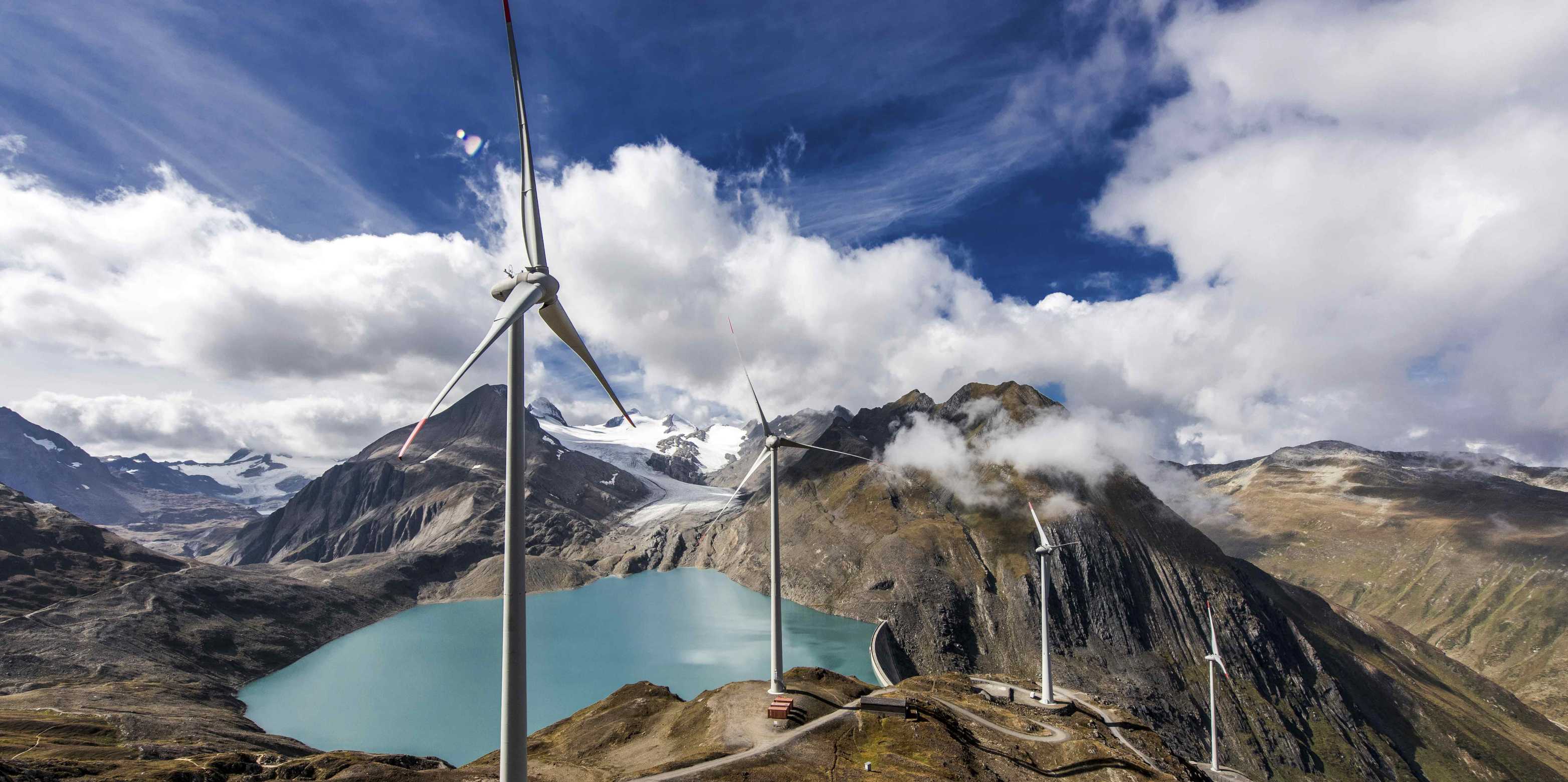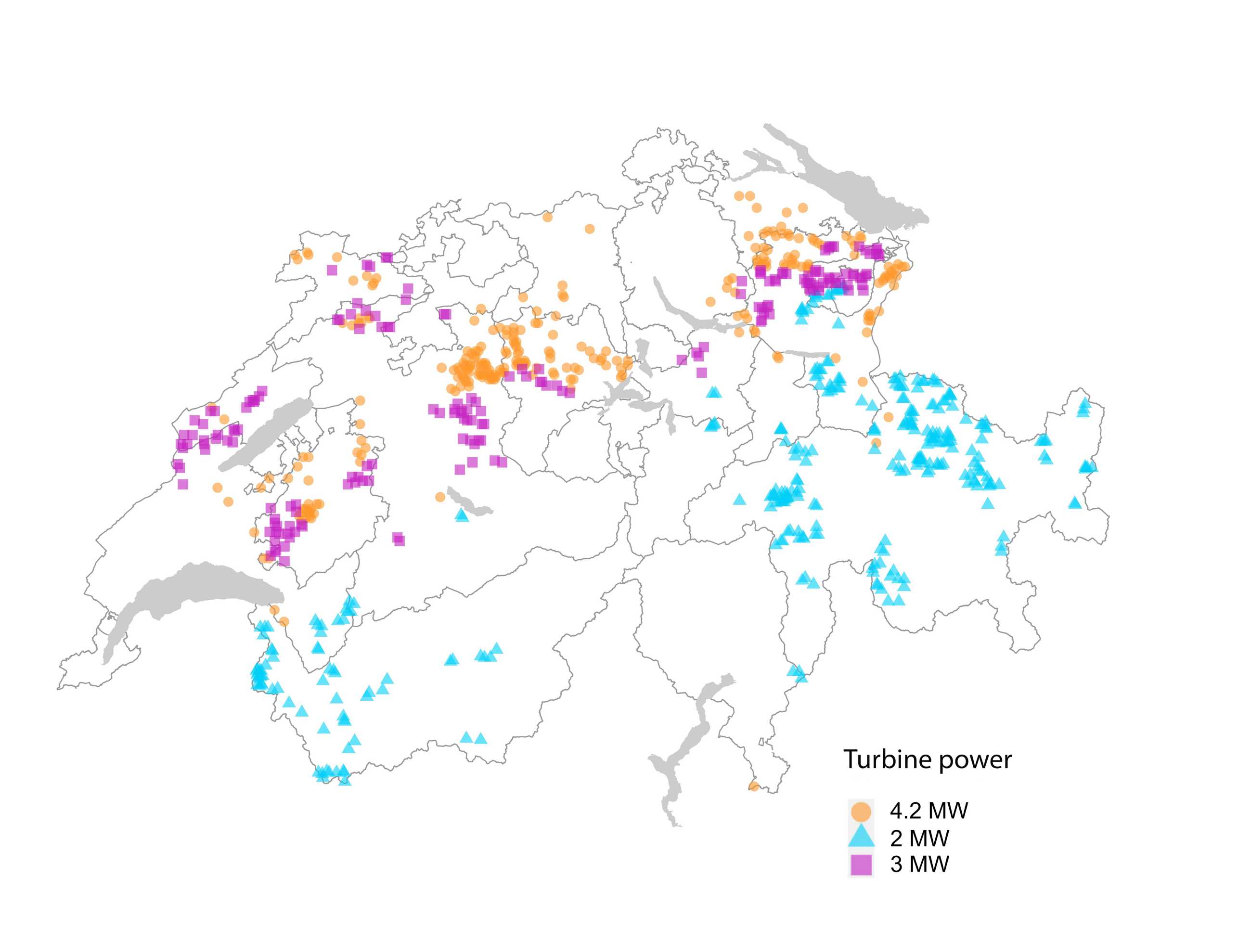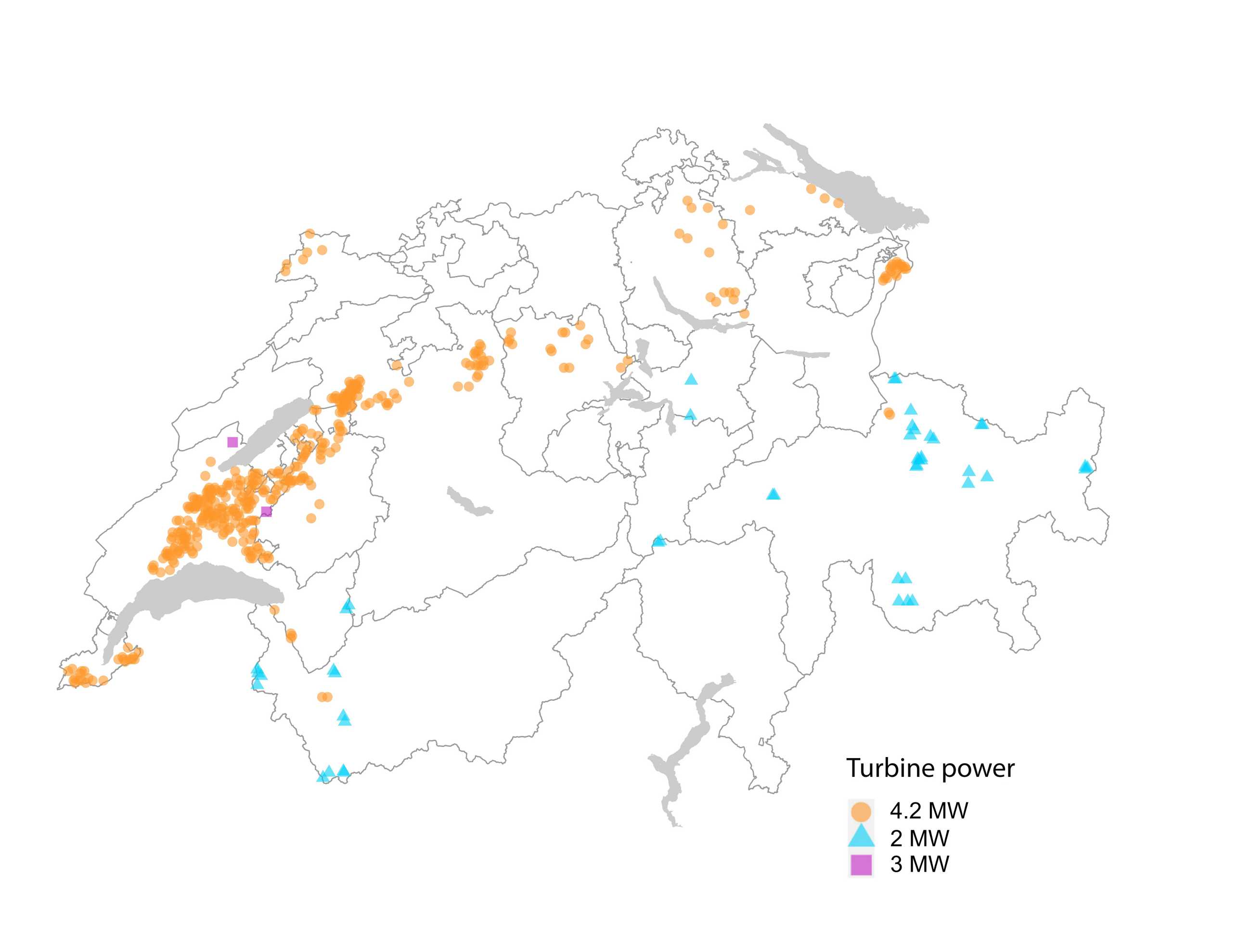
Where should wind turbines be constructed in Switzerland?
A research team led by Adrienne Grêt-Regamey, Professor of Planning Landscape and Urban Systems (PLUS), shows for the first time how a relaxation of Swiss spatial planning policy would affect the locations of wind turbines. If the aim is to have as few wind turbines as possible in the Alps and in Switzerland in general, it would be worth considering using windy agricultural areas on the western Swiss Plateau.
Abstract
- In order to generate the 4.3 TWh of wind power per year as envisaged in the wind energy concept, around 760 wind turbines would be needed in Switzerland by 2050.
- According to current spatial planning, this scenario would require a strong expansion of wind energy in the Alps.
- If windy crop rotation areas could be used for wind energy, almost 200 fewer wind turbines would be needed in the Grisons and Valais mountains.
- Crop rotation areas in the central plateau of western Switzerland have the greatest potential in Switzerland for generating wind power.
By 2050, wind power is set to provide around 7 percent of Switzerland’s electricity. According to the Energy Strategy, this amounts to around 4.3 terawatt-hours (TWh) per year. As of today, Switzerland is still far from achieving this goal: the country’s almost 40 existing wind turbines produce only 0.14 TWh, or 0.3 percent of its power.
Policymakers now want to accelerate energy production from wind power. Especially in winter, when demand exceeds the combined output from photovoltaic and hydroelectric power plants, electricity from wind turbines should prevent a shortfall. But where is the best place to generate wind power in Switzerland? In the Alps, on the plains of the Swiss Plateau, or in the foothills of the Alps and in the Jura Mountains?
A study by ETH Zurich researchers led by Adrienne Grêt-Regamey, Professor of Planning Landscape and Urban Systems (PLUS), now shows for the first time different scenarios of how wind turbines could be distributed regionally to achieve the goal set out in Switzerland’s Energy Strategy 2050 as efficiently as possible.
For the first time, the authors of the study also took into account areas in which wind turbine construction is currently prohibited. “If we used particularly good farmland, known as crop rotation areas, on the windy Swiss Plateau to generate wind power in addition to producing food, we would have to build far fewer wind turbines in the Alps,” Grêt-Regamey says.
Around 760 wind turbines in the reference scenario
The study authors’ reference scenario is based on the Swiss federal government’s wind energy concept, which defines the areas where wind energy may be harnessed. It specifies, for example, that no wind turbines should be built in forests, on crop rotation areas or in the vicinity of heritage sites.
To generate 4.3 TWh of wind power per year in this scenario would take about 760 wind turbines. In their calculations, the researchers assume that as few wind turbines as possible should be built in only a handful of particularly windy locations.
Since it is neither reasonable nor technically feasible to build the same turbines at all locations, the study considers smaller ones (100 metres high, 39 metres rotor radius) for the Alps, medium-sized ones (125 metres high, 67 metres rotor radius) for the foothills of the Alps and the Jura Mountains, and the largest and most powerful wind turbines (150 metres high, 73 metres rotor radius) for the plains of the Swiss Plateau. The following should be noted: at full capacity, a large turbine on the plains of the Swiss Plateau generates over twice as much electricity as a small turbine in the Alps.
Significant development necessary in the Alps
Of the approximately 760 wind turbines required, some 40 percent would be located in the Grison and Pennine Alps. But these 300 or so small turbines would generate only about 20 percent of the annual output. “This is suboptimal, as the construction and operating costs of wind turbines tend to be higher in the mountains than on the plains, and the people of Switzerland find the thought of wind turbines in unspoiled, natural landscapes in the Alps particularly disturbing,” Grêt-Regamey explains.
About half of the 4.3 TWh would be generated by some 260 of the largest turbines on the plains of the Swiss Plateau – 80 percent of them located in the cantons of Bern, St. Gallen, Lucerne and Fribourg. The remaining 30 percent of the wind power projected annually until 2050 would be met by around 180 turbines in the foothills of the Alps, most of these located in the cantons of Bern, Fribourg, St. Gallen and Appenzell Ausserrhoden.
Based on these calculations, the researchers created a map showing the approximate distribution of wind turbines. “The points should be read as national focus areas and not as exact locations for wind turbines,” says Reto Spielhofer, the lead author of the study, who is also a researcher in Grêt-Regamey’s research group.

Make use of particularly windy areas
As part of the reference scenario, the researchers also identified 36 sites that would be particularly suitable for generating wind power. Without having to adjust spatial planning policy, these sites together could meet just under 5 percent of annual demand. Nine of these sites are located in the cantons of Graubünden and Valais, six in St. Gallen, five in Bern, two each in Vaud and Fribourg, and one in the canton of Uri.

300 fewer turbines with crop rotation areas
The study by the ETH Zurich researchers also examines what effect a relaxation of spatial planning requirements would have on the regional distribution of wind turbines. For example, in one scenario they assume that crop rotation areas may also be used for wind power. “We’re aware that such use of this land is extremely controversial, as it’s very good agricultural land that produces high agricultural yields,” Grêt-Regamey says.
Nevertheless, the researchers wanted to show what scope there would be for expanding wind power if turbines could also be sited in crop rotation areas, especially ones where the wind blows frequently and strongly. Compared to the reference scenario, some 300 fewer wind turbines would be needed throughout Switzerland to generate the planned wind power of 4.3 TWh per year.
Strong concentration on the western Swiss Plateau
“If we relaxed the spatial planning regulations as they relate to crop rotation areas, we would need almost 200 fewer wind turbines in the Grison and Pennine Alps than in the reference scenario,” Grêt-Regamey says.
Only just over 3 percent of the annual target of 4.3 TWh of wind power would have to be generated in the Alps and less than 1 percent in the foothills of the Alps and in the Jura Mountains. Meanwhile, more than 96 percent would come from the largest turbines on the plains – and in particular the western Swiss Plateau. Of the total of about 460 wind turbines in this scenario, just over 40 percent would be located in the canton of Vaud and about 13 percent each in the cantons of Fribourg and Bern.
“There’s a trade-off between the number of wind turbines and their distribution,” Grêt-Regamey says: “If we want to have as few wind turbines as possible – both in general and in the Alps in particular – we have to build large, highly visible wind turbines where there is the most wind: on the western Swiss Plateau. If, on the other hand, we prioritise the protection of crop rotation areas, we will not be able to avoid expansion in the Alps.”

Original Publication
Spielhofer R, Schwaab J, Grêt-Regamey A.
external page How spatial policies can leverage energy transitions. Finding Pareto-optimal solutions for wind turbine locations with evolutionary multi-objective optimization
Environmental Science & Policy 2023, 142: 220, doi: 10.1016/j.envsci.2023.02.016
Contact
Head of Inst Spatial and Landscape Development
Inst. f. Raum- u. Landschaftsentw.
Stefano-Franscini-Platz 5
8093
Zürich
Switzerland
